Public Health Insurance
Private Health Insurance
Employer-Sponsored Insurance
Exchange-Based Insurance
Individual Plans
Family Plans
Group Plans
Critical Illness Plans
Individuals
Families
Senior Citizens
Corporate Employees
Medical Coverage
Dental Coverage
Vision Coverage
Pharmacy Coverage
North America
Europe
South America
Asia Pacific
Middle East and Africa
North America Outlook (USD Billion, 2019-2035)
North America Health Insurance Market by Type of Health Insurance Type
Public Health Insurance
Private Health Insurance
Employer-Sponsored Insurance
Exchange-Based Insurance
North America Health Insurance Market by Policy Type
Individual Plans
Family Plans
Group Plans
Critical Illness Plans
North America Health Insurance Market by End User Type
Individuals
Families
Senior Citizens
Corporate Employees
North America Health Insurance Market by Coverage Type
Medical Coverage
Dental Coverage
Vision Coverage
Pharmacy Coverage
North America Health Insurance Market by Regional Type
US
Canada
US Outlook (USD Billion, 2019-2035)
US Health Insurance Market by Type of Health Insurance Type
Public Health Insurance
Private Health Insurance
Employer-Sponsored Insurance
Exchange-Based Insurance
US Health Insurance Market by Policy Type
Individual Plans
Family Plans
Group Plans
Critical Illness Plans
US Health Insurance Market by End User Type
Individuals
Families
Senior Citizens
Corporate Employees
US Health Insurance Market by Coverage Type
Medical Coverage
Dental Coverage
Vision Coverage
Pharmacy Coverage
CANADA Outlook (USD Billion, 2019-2035)
CANADA Health Insurance Market by Type of Health Insurance Type
Public Health Insurance
Private Health Insurance
Employer-Sponsored Insurance
Exchange-Based Insurance
CANADA Health Insurance Market by Policy Type
Individual Plans
Family Plans
Group Plans
Critical Illness Plans
CANADA Health Insurance Market by End User Type
Individuals
Families
Senior Citizens
Corporate Employees
CANADA Health Insurance Market by Coverage Type
Medical Coverage
Dental Coverage
Vision Coverage
Pharmacy Coverage
Europe Outlook (USD Billion, 2019-2035)
Europe Health Insurance Market by Type of Health Insurance Type
Public Health Insurance
Private Health Insurance
Employer-Sponsored Insurance
Exchange-Based Insurance
Europe Health Insurance Market by Policy Type
Individual Plans
Family Plans
Group Plans
Critical Illness Plans
Europe Health Insurance Market by End User Type
Individuals
Families
Senior Citizens
Corporate Employees
Europe Health Insurance Market by Coverage Type
Medical Coverage
Dental Coverage
Vision Coverage
Pharmacy Coverage
Europe Health Insurance Market by Regional Type
Germany
UK
France
Russia
Italy
Spain
Rest of Europe
GERMANY Outlook (USD Billion, 2019-2035)
GERMANY Health Insurance Market by Type of Health Insurance Type
Public Health Insurance
Private Health Insurance
Employer-Sponsored Insurance
Exchange-Based Insurance
GERMANY Health Insurance Market by Policy Type
Individual Plans
Family Plans
Group Plans
Critical Illness Plans
GERMANY Health Insurance Market by End User Type
Individuals
Families
Senior Citizens
Corporate Employees
GERMANY Health Insurance Market by Coverage Type
Medical Coverage
Dental Coverage
Vision Coverage
Pharmacy Coverage
UK Outlook (USD Billion, 2019-2035)
UK Health Insurance Market by Type of Health Insurance Type
Public Health Insurance
Private Health Insurance
Employer-Sponsored Insurance
Exchange-Based Insurance
UK Health Insurance Market by Policy Type
Individual Plans
Family Plans
Group Plans
Critical Illness Plans
UK Health Insurance Market by End User Type
Individuals
Families
Senior Citizens
Corporate Employees
UK Health Insurance Market by Coverage Type
Medical Coverage
Dental Coverage
Vision Coverage
Pharmacy Coverage
FRANCE Outlook (USD Billion, 2019-2035)
FRANCE Health Insurance Market by Type of Health Insurance Type
Public Health Insurance
Private Health Insurance
Employer-Sponsored Insurance
Exchange-Based Insurance
FRANCE Health Insurance Market by Policy Type
Individual Plans
Family Plans
Group Plans
Critical Illness Plans
FRANCE Health Insurance Market by End User Type
Individuals
Families
Senior Citizens
Corporate Employees
FRANCE Health Insurance Market by Coverage Type
Medical Coverage
Dental Coverage
Vision Coverage
Pharmacy Coverage
RUSSIA Outlook (USD Billion, 2019-2035)
RUSSIA Health Insurance Market by Type of Health Insurance Type
Public Health Insurance
Private Health Insurance
Employer-Sponsored Insurance
Exchange-Based Insurance
RUSSIA Health Insurance Market by Policy Type
Individual Plans
Family Plans
Group Plans
Critical Illness Plans
RUSSIA Health Insurance Market by End User Type
Individuals
Families
Senior Citizens
Corporate Employees
RUSSIA Health Insurance Market by Coverage Type
Medical Coverage
Dental Coverage
Vision Coverage
Pharmacy Coverage
ITALY Outlook (USD Billion, 2019-2035)
ITALY Health Insurance Market by Type of Health Insurance Type
Public Health Insurance
Private Health Insurance
Employer-Sponsored Insurance
Exchange-Based Insurance
ITALY Health Insurance Market by Policy Type
Individual Plans
Family Plans
Group Plans
Critical Illness Plans
ITALY Health Insurance Market by End User Type
Individuals
Families
Senior Citizens
Corporate Employees
ITALY Health Insurance Market by Coverage Type
Medical Coverage
Dental Coverage
Vision Coverage
Pharmacy Coverage
SPAIN Outlook (USD Billion, 2019-2035)
SPAIN Health Insurance Market by Type of Health Insurance Type
Public Health Insurance
Private Health Insurance
Employer-Sponsored Insurance
Exchange-Based Insurance
SPAIN Health Insurance Market by Policy Type
Individual Plans
Family Plans
Group Plans
Critical Illness Plans
SPAIN Health Insurance Market by End User Type
Individuals
Families
Senior Citizens
Corporate Employees
SPAIN Health Insurance Market by Coverage Type
Medical Coverage
Dental Coverage
Vision Coverage
Pharmacy Coverage
REST OF EUROPE Outlook (USD Billion, 2019-2035)
REST OF EUROPE Health Insurance Market by Type of Health Insurance Type
Public Health Insurance
Private Health Insurance
Employer-Sponsored Insurance
Exchange-Based Insurance
REST OF EUROPE Health Insurance Market by Policy Type
Individual Plans
Family Plans
Group Plans
Critical Illness Plans
REST OF EUROPE Health Insurance Market by End User Type
Individuals
Families
Senior Citizens
Corporate Employees
REST OF EUROPE Health Insurance Market by Coverage Type
Medical Coverage
Dental Coverage
Vision Coverage
Pharmacy Coverage
APAC Outlook (USD Billion, 2019-2035)
APAC Health Insurance Market by Type of Health Insurance Type
Public Health Insurance
Private Health Insurance
Employer-Sponsored Insurance
Exchange-Based Insurance
APAC Health Insurance Market by Policy Type
Individual Plans
Family Plans
Group Plans
Critical Illness Plans
APAC Health Insurance Market by End User Type
Individuals
Families
Senior Citizens
Corporate Employees
APAC Health Insurance Market by Coverage Type
Medical Coverage
Dental Coverage
Vision Coverage
Pharmacy Coverage
APAC Health Insurance Market by Regional Type
China
India
Japan
South Korea
Malaysia
Thailand
Indonesia
Rest of APAC
CHINA Outlook (USD Billion, 2019-2035)
CHINA Health Insurance Market by Type of Health Insurance Type
Public Health Insurance
Private Health Insurance
Employer-Sponsored Insurance
Exchange-Based Insurance
CHINA Health Insurance Market by Policy Type
Individual Plans
Family Plans
Group Plans
Critical Illness Plans
CHINA Health Insurance Market by End User Type
Individuals
Families
Senior Citizens
Corporate Employees
CHINA Health Insurance Market by Coverage Type
Medical Coverage
Dental Coverage
Vision Coverage
Pharmacy Coverage
INDIA Outlook (USD Billion, 2019-2035)
INDIA Health Insurance Market by Type of Health Insurance Type
Public Health Insurance
Private Health Insurance
Employer-Sponsored Insurance
Exchange-Based Insurance
INDIA Health Insurance Market by Policy Type
Individual Plans
Family Plans
Group Plans
Critical Illness Plans
INDIA Health Insurance Market by End User Type
Individuals
Families
Senior Citizens
Corporate Employees
INDIA Health Insurance Market by Coverage Type
Medical Coverage
Dental Coverage
Vision Coverage
Pharmacy Coverage
JAPAN Outlook (USD Billion, 2019-2035)
JAPAN Health Insurance Market by Type of Health Insurance Type
Public Health Insurance
Private Health Insurance
Employer-Sponsored Insurance
Exchange-Based Insurance
JAPAN Health Insurance Market by Policy Type
Individual Plans
Family Plans
Group Plans
Critical Illness Plans
JAPAN Health Insurance Market by End User Type
Individuals
Families
Senior Citizens
Corporate Employees
JAPAN Health Insurance Market by Coverage Type
Medical Coverage
Dental Coverage
Vision Coverage
Pharmacy Coverage
SOUTH KOREA Outlook (USD Billion, 2019-2035)
SOUTH KOREA Health Insurance Market by Type of Health Insurance Type
Public Health Insurance
Private Health Insurance
Employer-Sponsored Insurance
Exchange-Based Insurance
SOUTH KOREA Health Insurance Market by Policy Type
Individual Plans
Family Plans
Group Plans
Critical Illness Plans
SOUTH KOREA Health Insurance Market by End User Type
Individuals
Families
Senior Citizens
Corporate Employees
SOUTH KOREA Health Insurance Market by Coverage Type
Medical Coverage
Dental Coverage
Vision Coverage
Pharmacy Coverage
MALAYSIA Outlook (USD Billion, 2019-2035)
MALAYSIA Health Insurance Market by Type of Health Insurance Type
Public Health Insurance
Private Health Insurance
Employer-Sponsored Insurance
Exchange-Based Insurance
MALAYSIA Health Insurance Market by Policy Type
Individual Plans
Family Plans
Group Plans
Critical Illness Plans
MALAYSIA Health Insurance Market by End User Type
Individuals
Families
Senior Citizens
Corporate Employees
MALAYSIA Health Insurance Market by Coverage Type
Medical Coverage
Dental Coverage
Vision Coverage
Pharmacy Coverage
THAILAND Outlook (USD Billion, 2019-2035)
THAILAND Health Insurance Market by Type of Health Insurance Type
Public Health Insurance
Private Health Insurance
Employer-Sponsored Insurance
Exchange-Based Insurance
THAILAND Health Insurance Market by Policy Type
Individual Plans
Family Plans
Group Plans
Critical Illness Plans
THAILAND Health Insurance Market by End User Type
Individuals
Families
Senior Citizens
Corporate Employees
THAILAND Health Insurance Market by Coverage Type
Medical Coverage
Dental Coverage
Vision Coverage
Pharmacy Coverage
INDONESIA Outlook (USD Billion, 2019-2035)
INDONESIA Health Insurance Market by Type of Health Insurance Type
Public Health Insurance
Private Health Insurance
Employer-Sponsored Insurance
Exchange-Based Insurance
INDONESIA Health Insurance Market by Policy Type
Individual Plans
Family Plans
Group Plans
Critical Illness Plans
INDONESIA Health Insurance Market by End User Type
Individuals
Families
Senior Citizens
Corporate Employees
INDONESIA Health Insurance Market by Coverage Type
Medical Coverage
Dental Coverage
Vision Coverage
Pharmacy Coverage
REST OF APAC Outlook (USD Billion, 2019-2035)
REST OF APAC Health Insurance Market by Type of Health Insurance Type
Public Health Insurance
Private Health Insurance
Employer-Sponsored Insurance
Exchange-Based Insurance
REST OF APAC Health Insurance Market by Policy Type
Individual Plans
Family Plans
Group Plans
Critical Illness Plans
REST OF APAC Health Insurance Market by End User Type
Individuals
Families
Senior Citizens
Corporate Employees
REST OF APAC Health Insurance Market by Coverage Type
Medical Coverage
Dental Coverage
Vision Coverage
Pharmacy Coverage
South America Outlook (USD Billion, 2019-2035)
South America Health Insurance Market by Type of Health Insurance Type
Public Health Insurance
Private Health Insurance
Employer-Sponsored Insurance
Exchange-Based Insurance
South America Health Insurance Market by Policy Type
Individual Plans
Family Plans
Group Plans
Critical Illness Plans
South America Health Insurance Market by End User Type
Individuals
Families
Senior Citizens
Corporate Employees
South America Health Insurance Market by Coverage Type
Medical Coverage
Dental Coverage
Vision Coverage
Pharmacy Coverage
South America Health Insurance Market by Regional Type
Brazil
Mexico
Argentina
Rest of South America
BRAZIL Outlook (USD Billion, 2019-2035)
BRAZIL Health Insurance Market by Type of Health Insurance Type
Public Health Insurance
Private Health Insurance
Employer-Sponsored Insurance
Exchange-Based Insurance
BRAZIL Health Insurance Market by Policy Type
Individual Plans
Family Plans
Group Plans
Critical Illness Plans
BRAZIL Health Insurance Market by End User Type
Individuals
Families
Senior Citizens
Corporate Employees
BRAZIL Health Insurance Market by Coverage Type
Medical Coverage
Dental Coverage
Vision Coverage
Pharmacy Coverage
MEXICO Outlook (USD Billion, 2019-2035)
MEXICO Health Insurance Market by Type of Health Insurance Type
Public Health Insurance
Private Health Insurance
Employer-Sponsored Insurance
Exchange-Based Insurance
MEXICO Health Insurance Market by Policy Type
Individual Plans
Family Plans
Group Plans
Critical Illness Plans
MEXICO Health Insurance Market by End User Type
Individuals
Families
Senior Citizens
Corporate Employees
MEXICO Health Insurance Market by Coverage Type
Medical Coverage
Dental Coverage
Vision Coverage
Pharmacy Coverage
ARGENTINA Outlook (USD Billion, 2019-2035)
ARGENTINA Health Insurance Market by Type of Health Insurance Type
Public Health Insurance
Private Health Insurance
Employer-Sponsored Insurance
Exchange-Based Insurance
ARGENTINA Health Insurance Market by Policy Type
Individual Plans
Family Plans
Group Plans
Critical Illness Plans
ARGENTINA Health Insurance Market by End User Type
Individuals
Families
Senior Citizens
Corporate Employees
ARGENTINA Health Insurance Market by Coverage Type
Medical Coverage
Dental Coverage
Vision Coverage
Pharmacy Coverage
REST OF SOUTH AMERICA Outlook (USD Billion, 2019-2035)
REST OF SOUTH AMERICA Health Insurance Market by Type of Health Insurance Type
Public Health Insurance
Private Health Insurance
Employer-Sponsored Insurance
Exchange-Based Insurance
REST OF SOUTH AMERICA Health Insurance Market by Policy Type
Individual Plans
Family Plans
Group Plans
Critical Illness Plans
REST OF SOUTH AMERICA Health Insurance Market by End User Type
Individuals
Families
Senior Citizens
Corporate Employees
REST OF SOUTH AMERICA Health Insurance Market by Coverage Type
Medical Coverage
Dental Coverage
Vision Coverage
Pharmacy Coverage
MEA Outlook (USD Billion, 2019-2035)
MEA Health Insurance Market by Type of Health Insurance Type
Public Health Insurance
Private Health Insurance
Employer-Sponsored Insurance
Exchange-Based Insurance
MEA Health Insurance Market by Policy Type
Individual Plans
Family Plans
Group Plans
Critical Illness Plans
MEA Health Insurance Market by End User Type
Individuals
Families
Senior Citizens
Corporate Employees
MEA Health Insurance Market by Coverage Type
Medical Coverage
Dental Coverage
Vision Coverage
Pharmacy Coverage
MEA Health Insurance Market by Regional Type
GCC Countries
South Africa
Rest of MEA
GCC COUNTRIES Outlook (USD Billion, 2019-2035)
GCC COUNTRIES Health Insurance Market by Type of Health Insurance Type
Public Health Insurance
Private Health Insurance
Employer-Sponsored Insurance
Exchange-Based Insurance
GCC COUNTRIES Health Insurance Market by Policy Type
Individual Plans
Family Plans
Group Plans
Critical Illness Plans
GCC COUNTRIES Health Insurance Market by End User Type
Individuals
Families
Senior Citizens
Corporate Employees
GCC COUNTRIES Health Insurance Market by Coverage Type
Medical Coverage
Dental Coverage
Vision Coverage
Pharmacy Coverage
SOUTH AFRICA Outlook (USD Billion, 2019-2035)
SOUTH AFRICA Health Insurance Market by Type of Health Insurance Type
Public Health Insurance
Private Health Insurance
Employer-Sponsored Insurance
Exchange-Based Insurance
SOUTH AFRICA Health Insurance Market by Policy Type
Individual Plans
Family Plans
Group Plans
Critical Illness Plans
SOUTH AFRICA Health Insurance Market by End User Type
Individuals
Families
Senior Citizens
Corporate Employees
SOUTH AFRICA Health Insurance Market by Coverage Type
Medical Coverage
Dental Coverage
Vision Coverage
Pharmacy Coverage
REST OF MEA Outlook (USD Billion, 2019-2035)
REST OF MEA Health Insurance Market by Type of Health Insurance Type
Public Health Insurance
Private Health Insurance
Employer-Sponsored Insurance
Exchange-Based Insurance
REST OF MEA Health Insurance Market by Policy Type
Individual Plans
Family Plans
Group Plans
Critical Illness Plans
REST OF MEA Health Insurance Market by End User Type
Individuals
Families
Senior Citizens
Corporate Employees
REST OF MEA Health Insurance Market by Coverage Type
Medical Coverage
Dental Coverage
Vision Coverage
Pharmacy Coverage

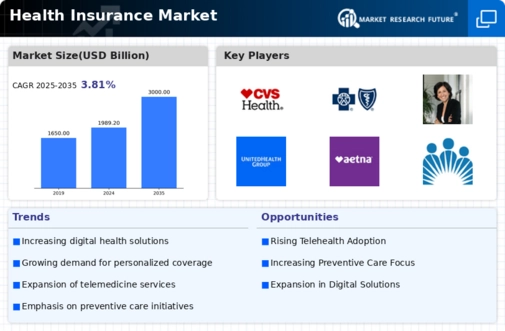
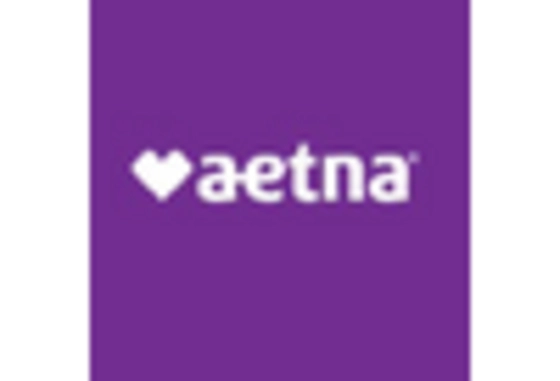

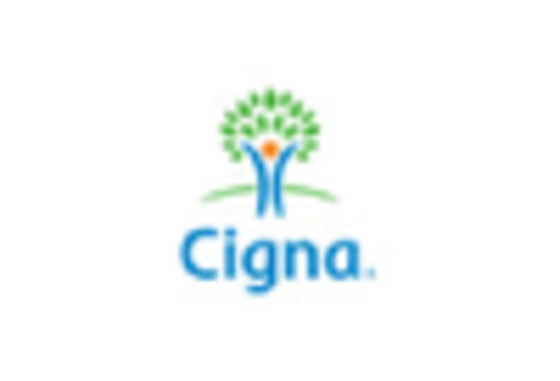
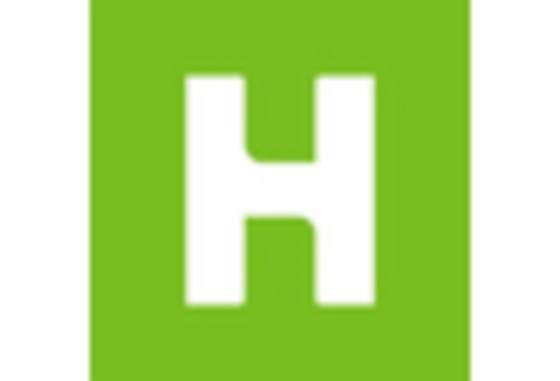
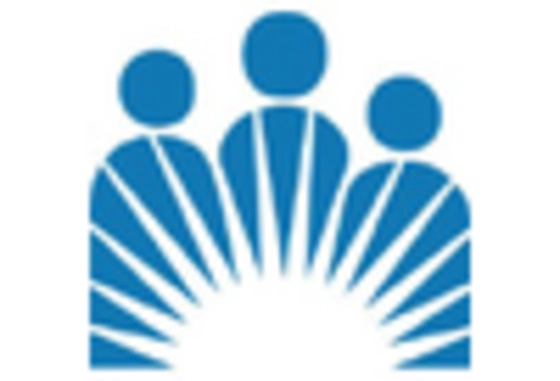
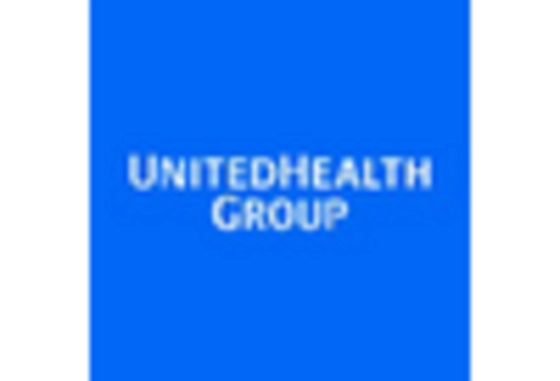









Leave a Comment